The Northrop Grumman B-21 Raider is the first new US strategic long-range bomber in more than 30 years. This nuclear-capable bat-wing stealth aircraft will be the key aerial platform to counter rising China. It is expected to make its first flight in 2023 and enter service around 2027. Evolved by the legendary Skunk Works of Lockheed-Martin, and manufactured by Northrop Grumman, the aircraft looks quite like the B-2, and will cost a whopping $700 million. Imbibing advances in low-observable technology it is claimed that even the most sophisticated air defence systems will struggle to detect it. The aircraft will be “optionally crewed”. The plane is part of the $1 trillion US nuclear deterrent upgrade that includes new nuclear submarines and land-based missiles. The US Air Force (USAF) initially wants 100 of them, the total production orders could finally be 200. It is meant to counter China’s evolving plan of 1,500 nuclear weapons, hypersonic weapons arsenal, cyber warfare and space capabilities. Six B-21s are already under production. The B-21 is a part of the USAF’s Long Range Strike Bomber (LRS-B) program. It is meant to replace the Rockwell B-1 Lancer and Northrop Grumman B-2 Spirit by 2040, and possibly the Boeing B-52 Stratofortress after that. Most details are still classified. The first photos were released in December 2022, taken during a rollout ceremony at Northrop Grumman’s production facilities in Palmdale, California. The USAF wanted the bomber to also function as an intelligence collection platform, battle manager and have interception capabilities. Some describe the B-21, as “the world’s first sixth-generation aircraft”, with Joint All-Domain Command and Control technologies to share data across platforms. Number 21 comes from the 21st Century and the word “Raider” is to honour the American Doolittle Raiders who attacked Tokyo, Japan on 18 April 1942. The B-21 is smaller and lighter than the B-2 and is designed with modular, open systems architecture to allow easy upgrades, and potentially, the ability to export components to foreign buyers. The aircraft engines will be Pratt & Whitney F135, same as the F-35, to reduce its cost. The USAF estimates to spend at least $203 billion over 30 years to develop, purchase, and operate a fleet of 100 B-21s. The USAF is also planning to acquire a new long-range fighter from its Next Generation Air Dominance program, to escort the B-21 deep into enemy territory. The B-21 could fly 4,000 km without refuelling, and deliver very significant quantity of munitions. USAF envisions the B-21 as the “backbone” of its future bomber force, and a key element of the US military arsenal for perhaps the next half-century. After the F-35, it will be the biggest aircraft acquisition in US military history. [caption id=“attachment_12432752” align=“alignnone” width=“300”] Boeing B-52 Stratofortress. Image courtesy USAF[/caption] Other American Bombers The Boeing B-52 Stratofortress is the American long-range, subsonic, strategic bomber operated by the USAF since the 1950s. The bomber can carry up to 32,000 kg of weapons and has a combat range of around 14,200 km without aerial refuelling. Around 75 aircraft are still in inventory. It has superior performance at high subsonic speeds and relatively low operating costs. After being upgraded between 2013 and 2015, the fleet is expected to serve till the 2050s. [caption id=“attachment_12432782” align=“alignnone” width=“300”]
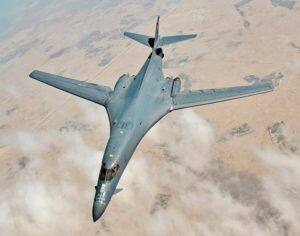 Rockwell B-1 Lancer. Image courtesy USAF[/caption] The Rockwell B-1 Lancer is a supersonic variable-sweep wing, heavy bomber of the USAF. It has a top speed of Mach 1.25 at a high altitude and the ability to fly for long distances at Mach 0.96 at very low altitudes. The B-1B variant formally entered service as a nuclear bomber in 1986. By 1988, all 100 aircraft had been delivered. Later the B-1B was converted for a conventional bombing role. It served in combat during Operation Desert Fox in 1998 and again in Kosovo, Afghanistan, and Iraq. The USAF still has 45 B-1Bs. The B-21 Raider will begin replacing the B-1B after 2025; all B-1s are planned to be retired by 2036. [caption id=“attachment_12432792” align=“alignnone” width=“300”]
Rockwell B-1 Lancer. Image courtesy USAF[/caption] The Rockwell B-1 Lancer is a supersonic variable-sweep wing, heavy bomber of the USAF. It has a top speed of Mach 1.25 at a high altitude and the ability to fly for long distances at Mach 0.96 at very low altitudes. The B-1B variant formally entered service as a nuclear bomber in 1986. By 1988, all 100 aircraft had been delivered. Later the B-1B was converted for a conventional bombing role. It served in combat during Operation Desert Fox in 1998 and again in Kosovo, Afghanistan, and Iraq. The USAF still has 45 B-1Bs. The B-21 Raider will begin replacing the B-1B after 2025; all B-1s are planned to be retired by 2036. [caption id=“attachment_12432792” align=“alignnone” width=“300”]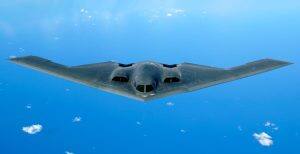 Northrop Grumman B-2 Spirit. Image courtesy USAF Staff Sgt Bennie J Davis III[/caption] B-2 ‘Spirit’ is a subsonic, two-crew, heavy strategic bomber, featuring low-observable stealth technology and is designed to penetrate dense anti-aircraft defences. It entered service in 1997. B-2 has an unrefuelled range of around 11,000 km, and increases to 19,000 km with one mid-air refuelling. At cruising altitude, the B-2 refuels every six hours, taking up to 45,000 kg of fuel at a time. The B-2 is capable of carrying 18,000 kg of ordnance that could be conventional and thermonuclear weapons, such as up to eighty 230 kg Mk 82 JDAM GPS-guided bombs, or sixteen 1,100 kg B83 nuclear bombs. USAF had originally planned 132 B-2 bombers but the production of the same was stopped in 2000 at 21 aircraft. The procurement cost per aircraft, including spare parts and software support, was $929 million per aircraft in 1997 dollars. The B-2 operating cost is nearly $135,000 per flight hour, which is about twice that of the B-52 and B-1. The B-2 is stored in a $5 million specialised air-conditioned hangar to maintain its stealth coating. Every seven years, this coating is redone. It is clearly an expensive exercise. The escalating cost of the B-2 program and evidence of flaws in the aircraft’s ability to elude detection by radar were among the factors that drove programme curtailment. B-2 was first used in combat to drop conventional ordnance in the Kosovo War in 1999. It was later used in Iraq, Afghanistan, and Libya. The Russian bomber aircraft The Tupolev Tu-22M is a supersonic, variable-sweep wing, long-range strategic and maritime strike bomber developed in the 1960s. The aircraft was operated by the Soviet Air Forces (VVS) in a missile carrier strategic bombing role, and by the Soviet Naval Aviation in a long-range maritime anti-shipping role. Just before the Ukraine conflict, there were 66 aircraft in service. The combat range is 2,500 km with a typical 10,000 kg weapons load. It can carry four Kh-47M2 Kinzhal nuclear-capable hypersonic air-launched ballistic missiles, nine of which have been fired on targets in Ukraine in the last year. [caption id=“attachment_12432832” align=“alignnone” width=“300”]
Northrop Grumman B-2 Spirit. Image courtesy USAF Staff Sgt Bennie J Davis III[/caption] B-2 ‘Spirit’ is a subsonic, two-crew, heavy strategic bomber, featuring low-observable stealth technology and is designed to penetrate dense anti-aircraft defences. It entered service in 1997. B-2 has an unrefuelled range of around 11,000 km, and increases to 19,000 km with one mid-air refuelling. At cruising altitude, the B-2 refuels every six hours, taking up to 45,000 kg of fuel at a time. The B-2 is capable of carrying 18,000 kg of ordnance that could be conventional and thermonuclear weapons, such as up to eighty 230 kg Mk 82 JDAM GPS-guided bombs, or sixteen 1,100 kg B83 nuclear bombs. USAF had originally planned 132 B-2 bombers but the production of the same was stopped in 2000 at 21 aircraft. The procurement cost per aircraft, including spare parts and software support, was $929 million per aircraft in 1997 dollars. The B-2 operating cost is nearly $135,000 per flight hour, which is about twice that of the B-52 and B-1. The B-2 is stored in a $5 million specialised air-conditioned hangar to maintain its stealth coating. Every seven years, this coating is redone. It is clearly an expensive exercise. The escalating cost of the B-2 program and evidence of flaws in the aircraft’s ability to elude detection by radar were among the factors that drove programme curtailment. B-2 was first used in combat to drop conventional ordnance in the Kosovo War in 1999. It was later used in Iraq, Afghanistan, and Libya. The Russian bomber aircraft The Tupolev Tu-22M is a supersonic, variable-sweep wing, long-range strategic and maritime strike bomber developed in the 1960s. The aircraft was operated by the Soviet Air Forces (VVS) in a missile carrier strategic bombing role, and by the Soviet Naval Aviation in a long-range maritime anti-shipping role. Just before the Ukraine conflict, there were 66 aircraft in service. The combat range is 2,500 km with a typical 10,000 kg weapons load. It can carry four Kh-47M2 Kinzhal nuclear-capable hypersonic air-launched ballistic missiles, nine of which have been fired on targets in Ukraine in the last year. [caption id=“attachment_12432832” align=“alignnone” width=“300”]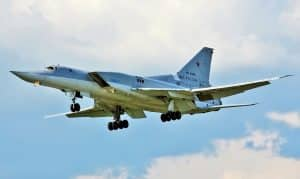 Tupolev Tu-22M. Image courtesy Dmitry Terekhov, Odintsovo, Russian Federation[/caption] The Tupolev Tu-160 is also a supersonic, variable-sweep wing heavy strategic bomber. It is the largest and heaviest Mach 2-plus supersonic military aircraft ever built. It entered service in 1987. Russia used the aircraft to attack targets in the Syrian Civil War, using Kh-101 air-launched cruise missiles. The fleet has seen several upgrades, largely in electronics systems. The first upgraded variant Tu-160M joined service in December 2014. In addition to 16 old, 50 new aircraft were to be built. The aircraft has a combat range of 2,000 km at Mach 1.5 and 7,300 km at subsonic speeds. It can carry a maximum of 45,000 Kg ordnance including 12 conventional or nuclear cruise missiles. There were unconfirmed reports that India was keen to buy at least six Tu-160. [caption id=“attachment_12432872” align=“alignnone” width=“300”]
Tupolev Tu-22M. Image courtesy Dmitry Terekhov, Odintsovo, Russian Federation[/caption] The Tupolev Tu-160 is also a supersonic, variable-sweep wing heavy strategic bomber. It is the largest and heaviest Mach 2-plus supersonic military aircraft ever built. It entered service in 1987. Russia used the aircraft to attack targets in the Syrian Civil War, using Kh-101 air-launched cruise missiles. The fleet has seen several upgrades, largely in electronics systems. The first upgraded variant Tu-160M joined service in December 2014. In addition to 16 old, 50 new aircraft were to be built. The aircraft has a combat range of 2,000 km at Mach 1.5 and 7,300 km at subsonic speeds. It can carry a maximum of 45,000 Kg ordnance including 12 conventional or nuclear cruise missiles. There were unconfirmed reports that India was keen to buy at least six Tu-160. [caption id=“attachment_12432872” align=“alignnone” width=“300”]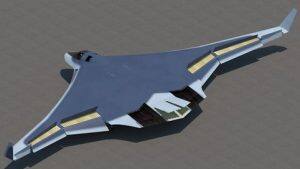 Tupolev PAK DA. Image courtesy Pravda, Russia[/caption] Tupolev PAK DA is the Russian stealth strategic bomber under development and expected to enter service in 2028. It is meant to eventually replace the older Tupolev Tu-95 in Russia’s Air Force. Three prototypes are planned to begin preliminary testing by April 2023 and enter serial production in 2027. This subsonic aircraft is expected to have an operational range of 12,000 kilometres. The aircraft will carry advanced precision-guided weapons, including hypersonic weapons, with conventional and nuclear payloads. Maximum weapon load will be up to 30 tons. It will have a crew of four. An unmanned strategic bomber may follow the PAK DA after 2040. The Chinese bomber aircraft The Xian H-6 twin-engine jet bomber of the People’s Liberation Army Air Force (PLAAF) is a licensed-built version of the Soviet Tupolev Tu-16 of the 1950s vintage. China built nearly 230 of these, and even today has close to 180, most of which have been highly modernised. Newer variants are capable of aerial refuelling and can carry up to six air-launched cruise missiles, giving it long-range standoff offensive air capability with precision-guided munitions. The aircraft has an unrefuelled combat range of 1,800 Km and a max weapon load of 12,000 kilogrammes. [caption id=“attachment_12432932” align=“alignnone” width=“300”]
Tupolev PAK DA. Image courtesy Pravda, Russia[/caption] Tupolev PAK DA is the Russian stealth strategic bomber under development and expected to enter service in 2028. It is meant to eventually replace the older Tupolev Tu-95 in Russia’s Air Force. Three prototypes are planned to begin preliminary testing by April 2023 and enter serial production in 2027. This subsonic aircraft is expected to have an operational range of 12,000 kilometres. The aircraft will carry advanced precision-guided weapons, including hypersonic weapons, with conventional and nuclear payloads. Maximum weapon load will be up to 30 tons. It will have a crew of four. An unmanned strategic bomber may follow the PAK DA after 2040. The Chinese bomber aircraft The Xian H-6 twin-engine jet bomber of the People’s Liberation Army Air Force (PLAAF) is a licensed-built version of the Soviet Tupolev Tu-16 of the 1950s vintage. China built nearly 230 of these, and even today has close to 180, most of which have been highly modernised. Newer variants are capable of aerial refuelling and can carry up to six air-launched cruise missiles, giving it long-range standoff offensive air capability with precision-guided munitions. The aircraft has an unrefuelled combat range of 1,800 Km and a max weapon load of 12,000 kilogrammes. [caption id=“attachment_12432932” align=“alignnone” width=“300”]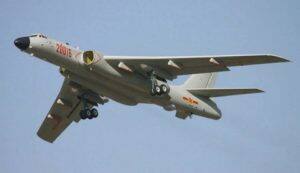 H-6K Bomber. Reuters[/caption] The Xian H-20 is a subsonic stealth bomber design of the People’s Liberation Army Air Force (PLAAF). It is the first dedicated strategic bomber being developed by China. The aircraft is targeted to enter service around 2025. The H-20 is expected to be a flying wing with a range of around 8,500 km and a conventional or nuclear payload of 10 tonnes. It could thus target US military bases in Guam and Hawaii. The visible design features include serrated air intakes, cranked-kite wings, and foldable twin tail surfaces that can be switched between being horizontal tail-planes and V-tails. It is speculated that the first flight could be within a year. [caption id=“attachment_12432942” align=“alignnone” width=“300”]
H-6K Bomber. Reuters[/caption] The Xian H-20 is a subsonic stealth bomber design of the People’s Liberation Army Air Force (PLAAF). It is the first dedicated strategic bomber being developed by China. The aircraft is targeted to enter service around 2025. The H-20 is expected to be a flying wing with a range of around 8,500 km and a conventional or nuclear payload of 10 tonnes. It could thus target US military bases in Guam and Hawaii. The visible design features include serrated air intakes, cranked-kite wings, and foldable twin tail surfaces that can be switched between being horizontal tail-planes and V-tails. It is speculated that the first flight could be within a year. [caption id=“attachment_12432942” align=“alignnone” width=“300”]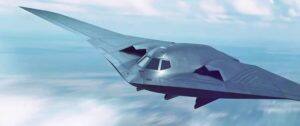 H-20 Bomber. Image courtesy China released video of 2012[/caption] Bomber aircraft: Deterrence and military outcomes Deterrence theory refers to how threats or even limited use of force by one party can convince another party to refrain from responding. It applied more prominently during the Cold War with regard to the use of nuclear weapons and the concept of mutually assured destruction, in short, unacceptable punishment. Strategic bombers of the Cold War were primarily armed with nuclear weapons. It is a form of coercion. Is a conventionally armed bomber capable of deterrence or making a big change in military outcomes? The bombers were used extensively in WW II to target London, and later the German industrial complex. Similarly, Japanese cities were targeted heavily during the last days of WW II. Neither of these actually had a war-changing impact nor deter the furtherance of war. Only the atomic bomb forced Japan into submission. Since the end of the Cold War, modern bombers originally intended for strategic use have exclusively been employed using non-nuclear, high-explosive weapons. During the Vietnam War, Operation Freedom Deal in Cambodia, the Gulf War, military action in Afghanistan, and the 2003 invasion of Iraq, American B-52s and B-1s were mostly employed in tactical roles. During the Soviet-Afghan war in 1979–88, Soviet Air Forces Tu-22Ms carried out several mass air raids in various regions of Afghanistan. The bombers did not bring the kind of effects which relatively cheaper, more agile, fighter aircraft with precision weapons could. In fact, many countries chose to have easily dispersible and deployable fighters in larger numbers even with nuclear weapons. The UK closed down their Vulcan bomber force in 1984 just after the Falklands War. Today, the world is once again facing strategic competition that could be more complex than in the Cold War years. Russia is trying to regain lost strategic standing. China is trying to catch up with the USA and in many ways surpassing in terms of economic, military and power. It has global dominance aspirations. Large Bombers are mainly being used to carry heavier long-range cruise missiles in larger numbers. Stealthy designs will allow greater penetration. These aircraft will also have in-build aerial self-protection electronics and air defence missiles. Future bombers will have the capacity for powerful directed energy weapons. That is one reason the three major powers are continuing to develop new bombers. The United States Secretary of Defence, Lloyd Austin says the B-21 will allow the US to deter enemies and strike targets even in highly contested airspace. Its range will allow the bomber to carry out missions without being based in theatre. The major powers continue to treat the bomber as a strategic deterrence asset. [caption id=“attachment_12433152” align=“alignnone” width=“300”]
H-20 Bomber. Image courtesy China released video of 2012[/caption] Bomber aircraft: Deterrence and military outcomes Deterrence theory refers to how threats or even limited use of force by one party can convince another party to refrain from responding. It applied more prominently during the Cold War with regard to the use of nuclear weapons and the concept of mutually assured destruction, in short, unacceptable punishment. Strategic bombers of the Cold War were primarily armed with nuclear weapons. It is a form of coercion. Is a conventionally armed bomber capable of deterrence or making a big change in military outcomes? The bombers were used extensively in WW II to target London, and later the German industrial complex. Similarly, Japanese cities were targeted heavily during the last days of WW II. Neither of these actually had a war-changing impact nor deter the furtherance of war. Only the atomic bomb forced Japan into submission. Since the end of the Cold War, modern bombers originally intended for strategic use have exclusively been employed using non-nuclear, high-explosive weapons. During the Vietnam War, Operation Freedom Deal in Cambodia, the Gulf War, military action in Afghanistan, and the 2003 invasion of Iraq, American B-52s and B-1s were mostly employed in tactical roles. During the Soviet-Afghan war in 1979–88, Soviet Air Forces Tu-22Ms carried out several mass air raids in various regions of Afghanistan. The bombers did not bring the kind of effects which relatively cheaper, more agile, fighter aircraft with precision weapons could. In fact, many countries chose to have easily dispersible and deployable fighters in larger numbers even with nuclear weapons. The UK closed down their Vulcan bomber force in 1984 just after the Falklands War. Today, the world is once again facing strategic competition that could be more complex than in the Cold War years. Russia is trying to regain lost strategic standing. China is trying to catch up with the USA and in many ways surpassing in terms of economic, military and power. It has global dominance aspirations. Large Bombers are mainly being used to carry heavier long-range cruise missiles in larger numbers. Stealthy designs will allow greater penetration. These aircraft will also have in-build aerial self-protection electronics and air defence missiles. Future bombers will have the capacity for powerful directed energy weapons. That is one reason the three major powers are continuing to develop new bombers. The United States Secretary of Defence, Lloyd Austin says the B-21 will allow the US to deter enemies and strike targets even in highly contested airspace. Its range will allow the bomber to carry out missions without being based in theatre. The major powers continue to treat the bomber as a strategic deterrence asset. [caption id=“attachment_12433152” align=“alignnone” width=“300”]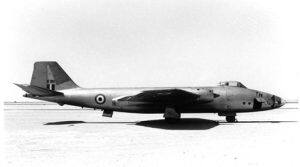 IAF Canberra bomber[/caption] Bomber Aircraft Options India Indian Air Force (IAF) last operated Canberra aircraft as a dedicated conventional bomber. Inducted in 1957, it was retired in 2007, after years of great operational tasking and military honours. IAF is now down to 31 fighter squadrons vis-à-vis the authorised 42. The fighter numbers are first priority to cater for a two-front war. The Su-30 MKI has an unrefuelled combat range of around 1,500 kilometres and can carry over 8,000 Kg weapon load, including one BrahMos air-to-surface missile, or may carry around three smaller BrahMos NG variants. A Su -30 MKI operating from Car-Nicobar Islands can reach up to the South China Sea with single refuelling. The Rafale has an unrefuelled combat range of around 1,800 km and can carry 9,500 kg external fuel and ordnance including SCALP cruise missile. All three countries operating bombers today have indigenous production and spare backup. The high cost of bombers does not fit into the current defence Capital budget allotments of the IAF. Typically a stealth bomber is nearly 6-8 times costlier than a stealth fighter. Just acquiring 6-8 bombers would be too expensive to maintain, and add huge infrastructure, and spare parts costs and complications. A formation of just three IAF fighters can deliver equal to, or more ordnance than the H-6 bomber. The higher agility of fighters and numbers would also increase survivability and give employment flexibility in multiple roles. The current fighters are also capable of the air vector role of nuclear deterrence. The defence of India’s homeland remains the nation’s first priority. IAF fighters can already cover all likely targets in the northern Indian Ocean from well past Malacca Strait to the Gulf of Hormuz. Similarly, IAF fighters can take on all relevant land-based targets against their immediate adversaries. IAF air defences will prevent incursions by the H-6K class of bombers, and in fact, should force it to remain at some distance from the border to reduce the cruise missile ranges. Under the current circumstances, acquiring bombers is not a priority for India for at least one decade. The writer is Director General, Centre for Air Power Studies. Views expressed are personal. Read all the
Latest News ,
Trending News ,
Cricket News ,
Bollywood News , India News and
Entertainment News here. Follow us on
Facebook,
Twitter and
Instagram.
IAF Canberra bomber[/caption] Bomber Aircraft Options India Indian Air Force (IAF) last operated Canberra aircraft as a dedicated conventional bomber. Inducted in 1957, it was retired in 2007, after years of great operational tasking and military honours. IAF is now down to 31 fighter squadrons vis-à-vis the authorised 42. The fighter numbers are first priority to cater for a two-front war. The Su-30 MKI has an unrefuelled combat range of around 1,500 kilometres and can carry over 8,000 Kg weapon load, including one BrahMos air-to-surface missile, or may carry around three smaller BrahMos NG variants. A Su -30 MKI operating from Car-Nicobar Islands can reach up to the South China Sea with single refuelling. The Rafale has an unrefuelled combat range of around 1,800 km and can carry 9,500 kg external fuel and ordnance including SCALP cruise missile. All three countries operating bombers today have indigenous production and spare backup. The high cost of bombers does not fit into the current defence Capital budget allotments of the IAF. Typically a stealth bomber is nearly 6-8 times costlier than a stealth fighter. Just acquiring 6-8 bombers would be too expensive to maintain, and add huge infrastructure, and spare parts costs and complications. A formation of just three IAF fighters can deliver equal to, or more ordnance than the H-6 bomber. The higher agility of fighters and numbers would also increase survivability and give employment flexibility in multiple roles. The current fighters are also capable of the air vector role of nuclear deterrence. The defence of India’s homeland remains the nation’s first priority. IAF fighters can already cover all likely targets in the northern Indian Ocean from well past Malacca Strait to the Gulf of Hormuz. Similarly, IAF fighters can take on all relevant land-based targets against their immediate adversaries. IAF air defences will prevent incursions by the H-6K class of bombers, and in fact, should force it to remain at some distance from the border to reduce the cruise missile ranges. Under the current circumstances, acquiring bombers is not a priority for India for at least one decade. The writer is Director General, Centre for Air Power Studies. Views expressed are personal. Read all the
Latest News ,
Trending News ,
Cricket News ,
Bollywood News , India News and
Entertainment News here. Follow us on
Facebook,
Twitter and
Instagram.
Under the current circumstances, acquiring bombers is not a priority for India for at least one decade
Advertisement
End of Article


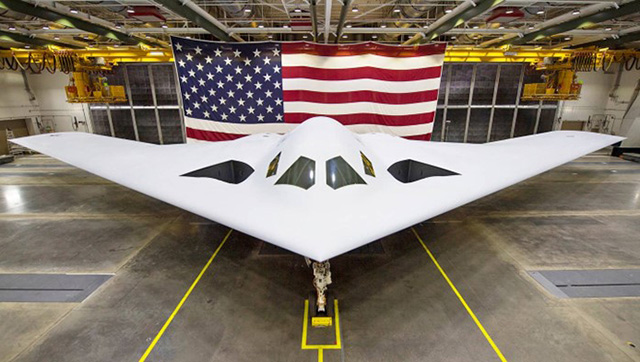)

)
)
)
)
)
)
)
)



